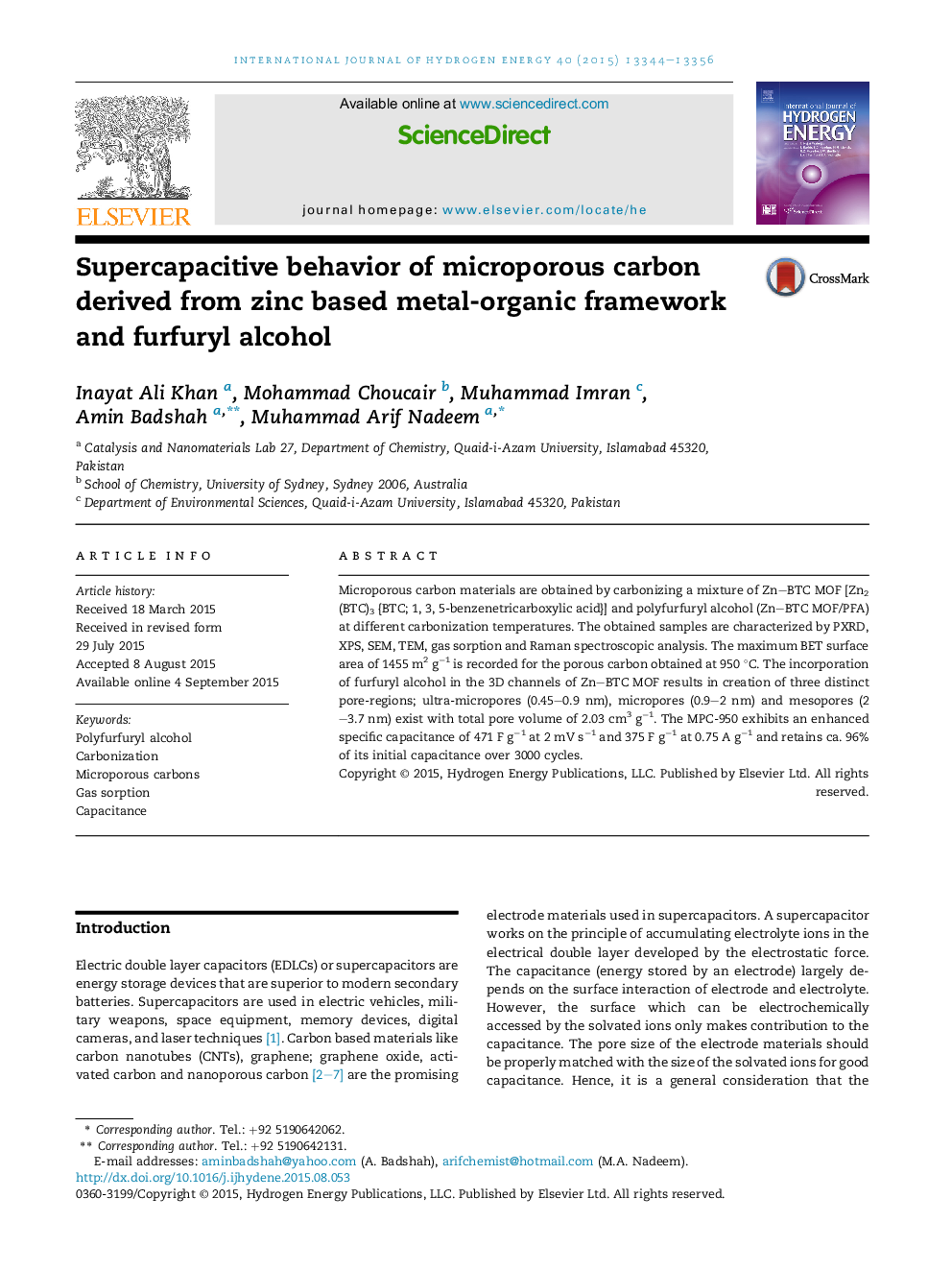| Article ID | Journal | Published Year | Pages | File Type |
|---|---|---|---|---|
| 1274628 | International Journal of Hydrogen Energy | 2015 | 13 Pages |
•Zn–BTC MOF/PFA converted into porous carbon materials.•The maximum BET surface area of 1455 m2 g−1 is recorded.•The MPC-950 exhibits an enhanced specific capacitance of 471 F g−1 at 2 mV s−1.
Microporous carbon materials are obtained by carbonizing a mixture of Zn–BTC MOF [Zn2 (BTC)3 {BTC; 1, 3, 5-benzenetricarboxylic acid}] and polyfurfuryl alcohol (Zn–BTC MOF/PFA) at different carbonization temperatures. The obtained samples are characterized by PXRD, XPS, SEM, TEM, gas sorption and Raman spectroscopic analysis. The maximum BET surface area of 1455 m2 g−1 is recorded for the porous carbon obtained at 950 °C. The incorporation of furfuryl alcohol in the 3D channels of Zn–BTC MOF results in creation of three distinct pore-regions; ultra-micropores (0.45–0.9 nm), micropores (0.9–2 nm) and mesopores (2–3.7 nm) exist with total pore volume of 2.03 cm3 g−1. The MPC-950 exhibits an enhanced specific capacitance of 471 F g−1 at 2 mV s−1 and 375 F g−1 at 0.75 A g−1 and retains ca. 96% of its initial capacitance over 3000 cycles.
